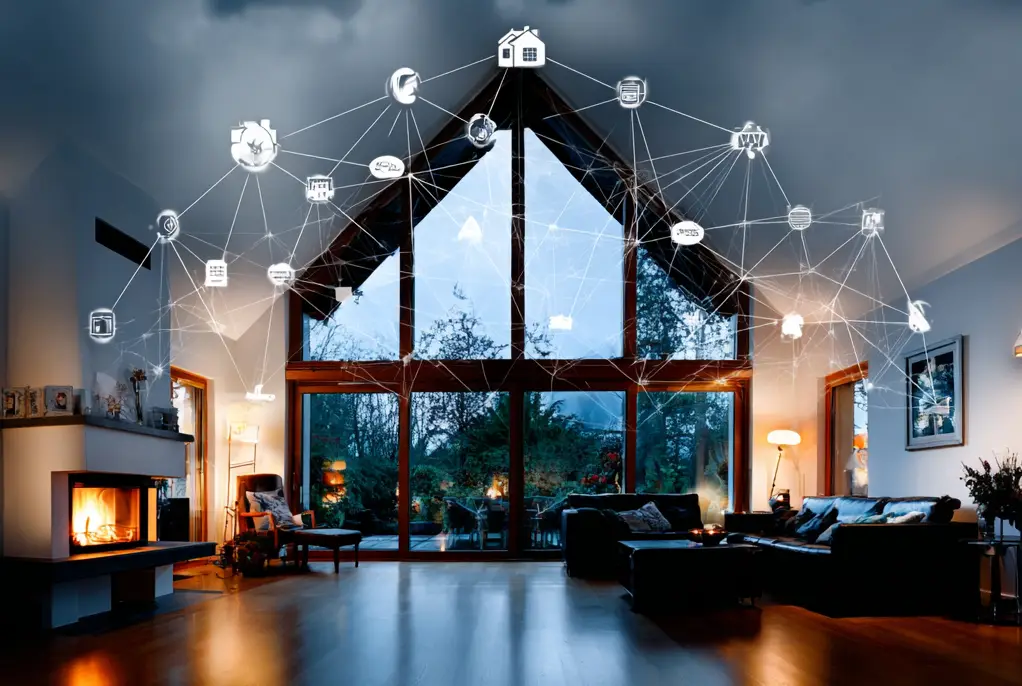Imagine a home that doesn’t just respond to your commands, but anticipates your needs. An environment that subtly adjusts to your emotional and physical state, creating a seamless and supportive backdrop to your life. This isn’t the stuff of science fiction; it is the promise of Ambient Computing, a quiet revolution that aims to weave technology so deeply into the fabric of our lives that it becomes invisible.
Pioneered by the late computer scientist Mark Weiser and refined by Eli Zelkha, the core idea is that “the most profound technologies are those that disappear.” Instead of a collection of gadgets demanding our attention, ambient computing envisions a “sentient space” that serves us proactively. Picture a living room that senses your stress levels through biometric data from your watch and responds by lowering the lights and playing calming music. Or a smart mirror that, aware of your calendar and the day’s weather, suggests the perfect outfit.
This is the ultimate evolution of the smart home—a move from simple automation to true ambient intelligence. So why does this incredible future still feel so far away for most of us?
The Great Disconnect: Why the Smart Home Fails the Ambient Dream
The mainstream smart home, dominated by the major tech giants, has taken a fundamentally different path. It’s a path that is architecturally incapable of delivering on the promise of ambient computing due to three core flaws:
- The Brain is Elsewhere (The Cloud Model): In most smart homes, the intelligence doesn’t live within your walls. It resides on a corporate server farm thousands of miles away. This cloud-centric model is the source of the frustrating lag you experience with every command. More critically, it creates a system entirely dependent on your internet connection and the company’s continued operation.
- Your Life is the Product (The Surveillance Business Model): The convenience of these cloud services comes at a steep, often hidden, price: your privacy. Your routines, conversations, and habits are collected and analyzed to build a detailed profile for targeted advertising. This business model is in direct conflict with the trust required for a truly ambient system. A home can’t be a seamless extension of your life if you’re constantly worried about who is listening.
- You Don’t Really Own It (The Crisis of Ownership): The history of the smart home is a graveyard of bricked devices. When a company decides to shut down its servers—as we’ve seen with Revolv, Insteon, and even Google’s Nest Secure—the hardware you purchased can be rendered useless overnight. With the cloud model, you aren’t buying a product; you’re renting a service that can be revoked at any time.
The Foundation for the Future: Building a Thinking Home
If the cloud-centric model is a dead end, how do we build the foundation for a true ambient intelligence? The answer lies in a different philosophy, one built on the principles of what I call The Thinking Home.
A Thinking Home is a private, reliable, and locally-controlled smart home. It is the necessary precursor to achieving ambient computing. Its core tenets directly solve the flaws of the mainstream model:
- Local Control: The brain of a Thinking Home resides within your own walls, on a dedicated hub. This ensures that your automations are lightning-fast and that your home continues to function perfectly, even if the internet is down.
- Privacy by Design: When your data is processed locally, it remains your own. There is no corporate data mining and no risk of your private life being exposed by a server breach. This creates the trusted environment that ambient intelligence requires.
- True Ownership: With a local-first system, the hardware you buy is yours. It will function indefinitely, free from the whims of a distant corporation.
Building a Thinking Home is the practical, actionable path to the aspirational goal of ambient computing. It is about laying the proper foundation of privacy and reliability today, so you can build the truly intelligent and sentient spaces of tomorrow.
The journey from a collection of frustrating gadgets to a seamless, intelligent environment is not about buying more devices. It is about making a conscious, philosophical choice. By embracing the principles of a Thinking Home, you are not just building a better smart home; you are taking the first, most important step into the future of ambient computing. To learn the practical, step-by-step methodology for building your own private and reliable smart home, explore the principles and workbooks in The Thinking Home: A Practical Guide to Planning and Building a Reliable and Private Smart Home.”

